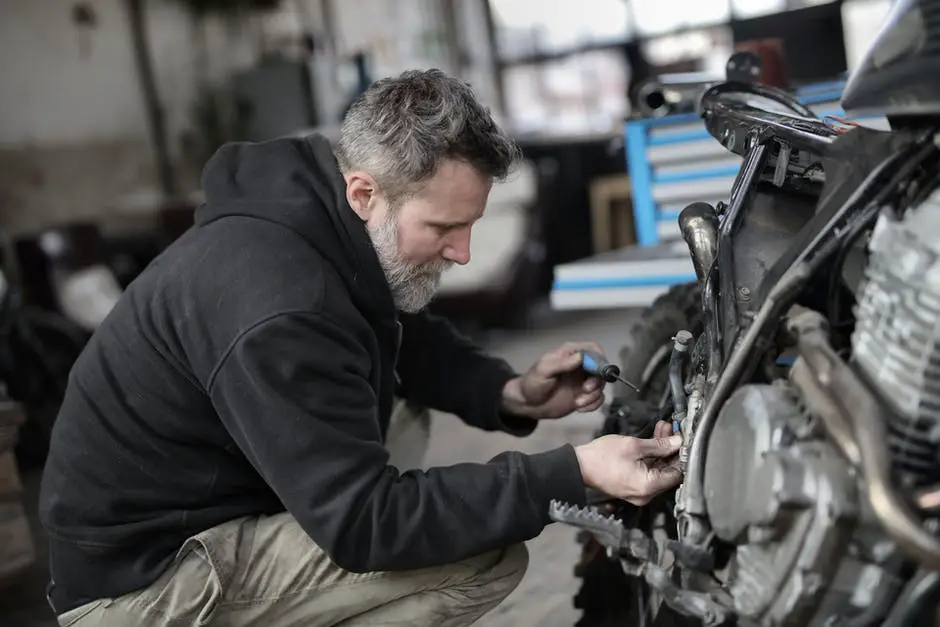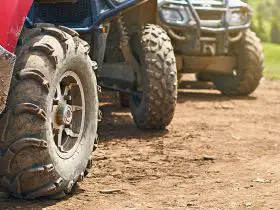You can get the fastest ATVs or the biggest utility ATV, but at the end of the day, the one problem all ATV owners will need to deal with is a flat tire.
60% of drivers say that they know how to change a flat tire? Are you a part of the 60% and an ATV rider?
If you know how to change your flat tire or you don’t, you’re probably wondering how to jack up that heavy ATV.
An ATV is designed to go on a wide range of terrains. These adventure trails and thrill-seeking attitudes can wreak havoc on your ATV and its tires. What if your ATV is leaking and you want to take a look underneath?
The first step to knowing how to change a flat tire or do routine maintenance on your ATV is to learn how to jack up an ATV. We’re here to provide you with a guide on everything you need to know about how to jack up an ATV. Keep reading to learn more.
Table of Contents
Why Do You Need a Jack?
When you’re out on the trail, a flat tire can make a huge impact on your day. You don’t want to be stuck out on a trail without a jack.
Trailer size to haul ATVs can vary and that’s another research project for you. Before you head down that road, you can keep your options open by keeping a jack handy.
You also need to invest some time in your ATV by conducting routine repair and maintenance. If you take care of your ATV, it’ll last you a long time. Learning how to conduct basic repair and maintenance can also save you money in the long term.
Don’t forget that your ATV can get heavy. Maybe you can get some buddies to push it up or put it up on some rocks, but at the end of the day, you want to be safe and comfortable while taking care of your ATV.
An ATV without cargo, fluids, or passengers can range from 220 pounds to 1,170 pounds (or 100 to 530 kg). The average weight of an ATV is about 700 pounds.
With a jack, you can make the safest choice for yourself and your ATV whether you are in the garage or out on a trail.
What Kind of Jack Should You Get?
There are several different types of jacks. Your particular make and model of ATV could have some recommended jacks, so check the owner’s manual and talk to some experts.
Each person will have their preference for the type of jack, depending on how much space they have and whether they want to transport it on their ATV. Knowing what types of jacks are out there can help make your decision easier.
Hydraulic Floor Jack
A hydraulic floor jack can be used for your ATV, UTV, lawnmower, or your car. It’s one of the most reliable and safest jacks to use for any vehicle. It’s an investment that will last you a long time.
They have a handle and release valve. When the release valve is closed, you can pump the handle and the jack will go up. They lift faster than other jacks.
While they do come in smaller sizes so they don’t take up too much space, they can get bulky and heavy. If you have a small garage, then it might be too tight for a hydraulic floor jack.
Scissor Jack
A scissor jack is small and portable. So, you can mount them on your ATV and keep them for emergencies. They won’t take up too much space in your garage or on your ATV.
It has a lead screw and a handle. When you turn the handle, it turns the lead screw and lifts the jack. They’re lightweight but can take a while to lift your ATV. It also requires a lot more effort.
ATV or Motorcycle Jack
You can get a jack that’s specially designed for ATVs or motorcycles. It looks like a floor jack but has a foot lever. It has a larger platform so it’s easier to balance your ATV.
The only problem is that they’re not as versatile since they can’t support as much weight as other jacks. They also cost more.
Table Jack or Lift Table
These are mostly for shops that do continuous repair work. Your ATV is on a table, and you can jack the whole thing up. It’s expensive for simple routine maintenance work on an ATV.
Bottle Jacks
These look like bottles and are probably the cheapest jack. They are easy to transport and save you some space in your garage. They are taller than other jacks, and may not fit under your ATV.
Tire pressure is important for ATVs. You must make sure to find the right tire pressure for your ATV. Not having the right tire pressure can lead to damaged tires. You’ll need that jack sooner rather than later.
Remember the scissor lift is the cheapest option and it’s also portable. So, you can take it with you on your trails for emergencies. A floor jack, on the other hand, is great for your garage if you have the space.
How to Jack Up an ATV?
As we already mentioned, check out any guidelines for your particular ATV and see if they have any specific rules or requirements.
If you can, try to find a flat spot to provide a good foundation for your ATV. Some avid riders recommend carrying a few 2×6 wood planks. You can use these to provide a solid foundation for your ATV especially if you’re going to be dealing with muddy, uneven terrain.
For a hydraulic jack, you want to place the life under the ATV. Pump the handle when the release valve is closed. This will raise the jack. Make sure that the ATV is secure.
For a scissor jack, turn the handle attached to the lead screw. It’ll turn the lead screw. This will raise the jack.
Where Should You Jack Up an ATV?
This probably goes without saying but you want to make sure that you’re jacking up your ATV on flat sturdy ground. If you’re not going all the way underneath your ATV, then maybe this isn’t as big of a concern for you. Remember that if you’re using an ATV jack or a scissor lift, then this is less of an issue.
Don’t jack the ATV from the rotors, rear sprockets, or the bottom of the engine. You don’t want to damage your ATV.
You want to make sure that the jack is placed on the frame. It doesn’t matter where on the frame as long as the ATV is balanced securely. Now you’re ready to do your repair or maintenance.
If you run into an issue that simple routine maintenance can’t fix, you need to take your ATV to a repair shop. Contact your UTV repair shops in your area to check if they repair ATVs as well.
Dos and Don’ts
You want to keep these dos and don’ts in mind the next time you’re using your jack on your ATV.
Do make sure everything is balanced and stable. Give it a little push to make sure it doesn’t wobble. You’re putting your safety at risk if you get underneath a wobbly or unbalanced ATV.
Don’t get underneath the ATV if there’s significant movement when jacked up. If there’s too much movement, then the jack might be too small or not strong enough for your ATV. You should find the right jack rather than get underneath an ATV that’s unbalanced.
Do check the safety guidelines of the jack you chose. All jacks have their guidelines. These guidelines will keep you informed so you’re prepared in case of an emergency.
Don’t rest the entire weight of your ATV on a single point. Taking this risk means that the ATV could topple over at any time, and you can get seriously injured. For added security, you can use multiple jacks, cinder blocks, or rocks under the frame to anchor the ATV.
Check Out More Tips and Tricks on ATV Riding
Now you know when you can need a jack and how to jack up an ATV. You also know what the different types of jacks are. You’re ready for your next flat tire or to finish that routine maintenance on your ATV.
You probably still have a lot of questions on your mind or maybe you just want to know more about your ATV. Maybe you want to learn about ATV sizes by age or the most reliable 4×4 ATV. Check out our blog for more articles that answer all your questions about ATV riding like this one on what to do if your ATV battery is dead.









